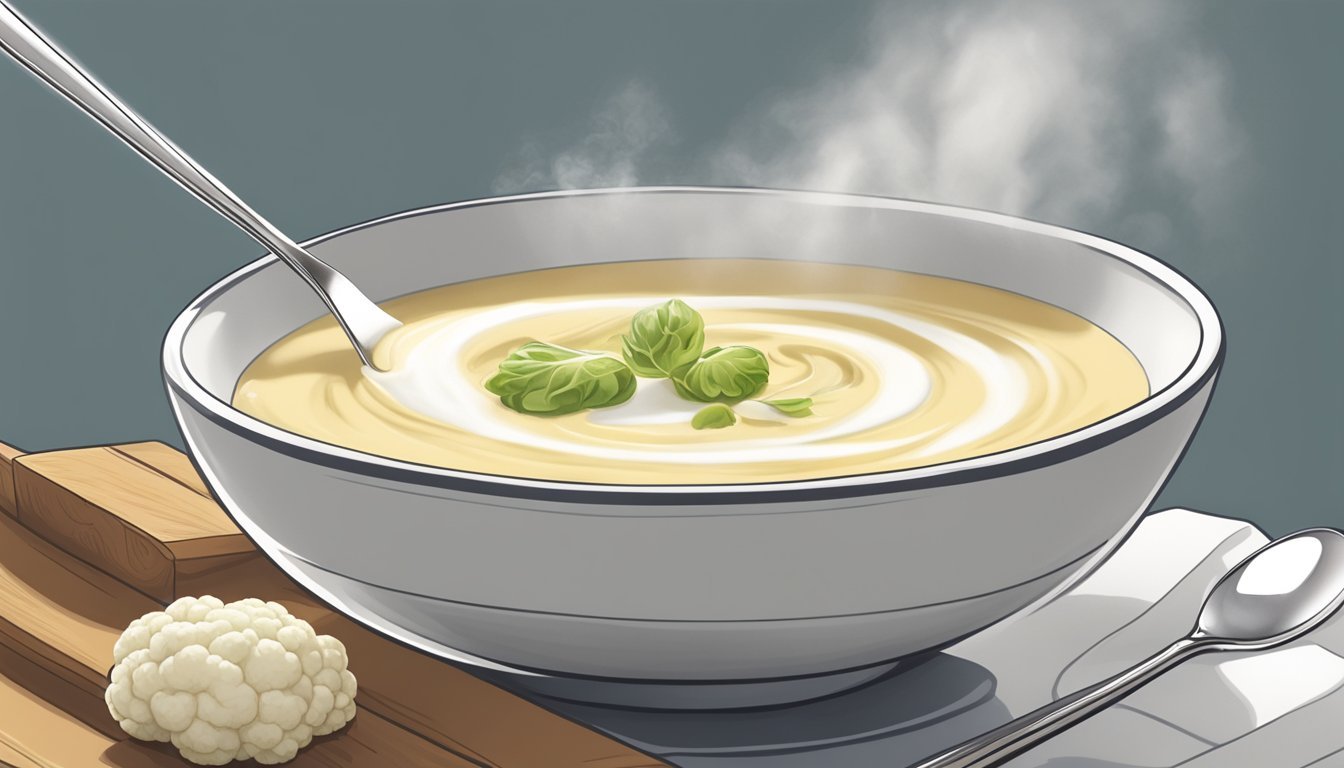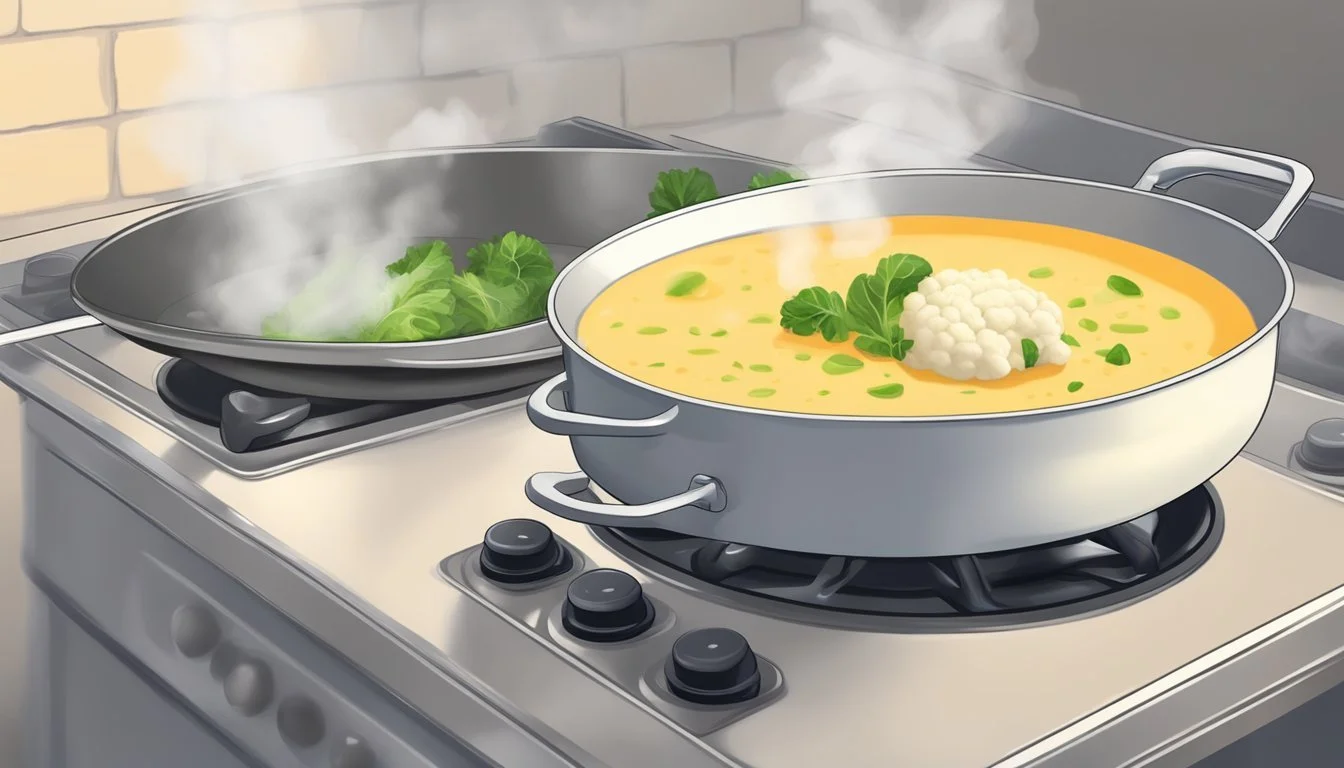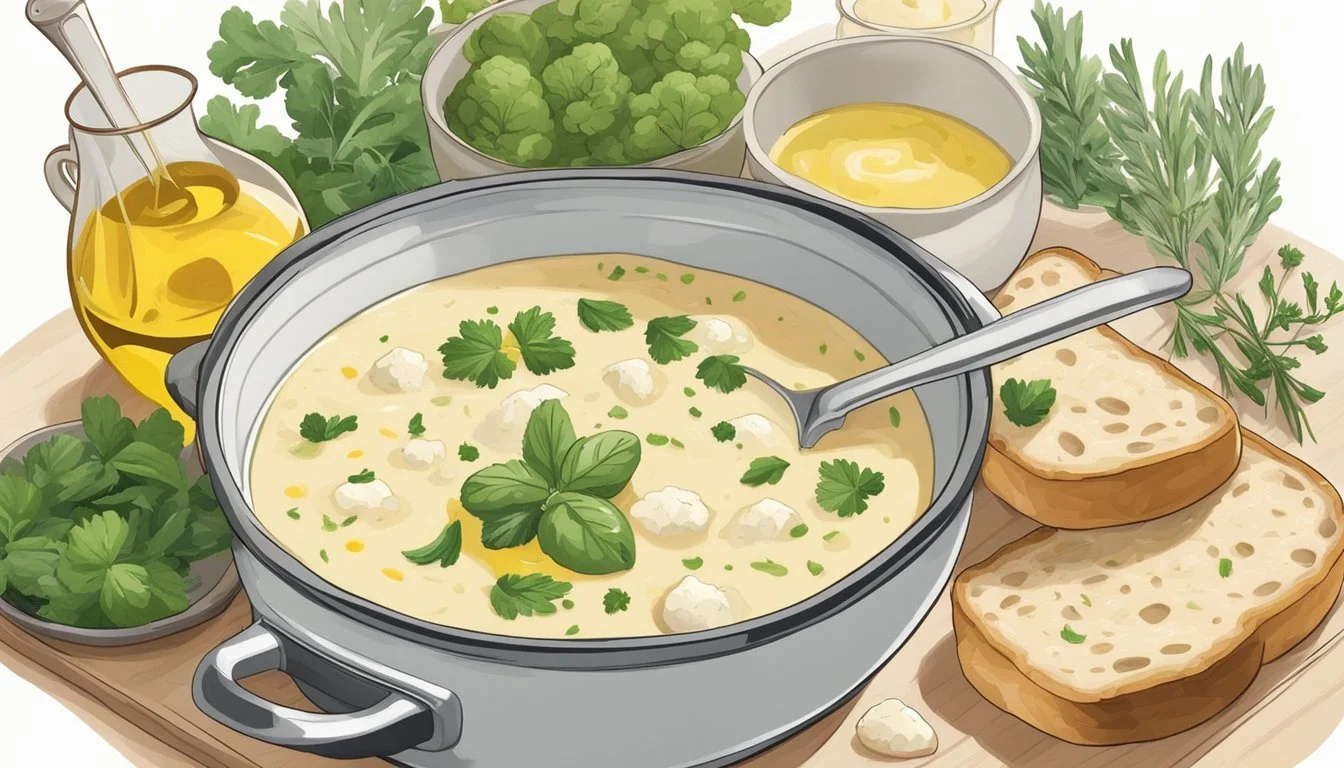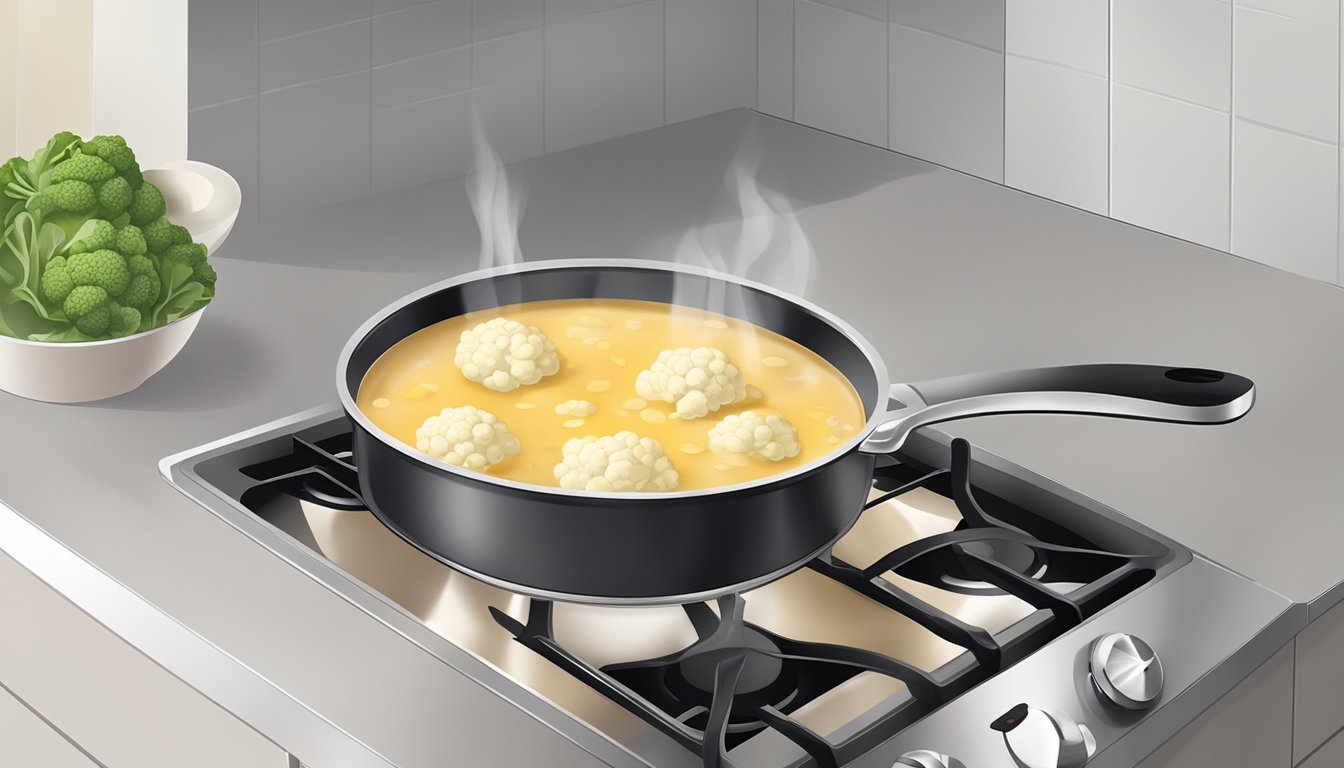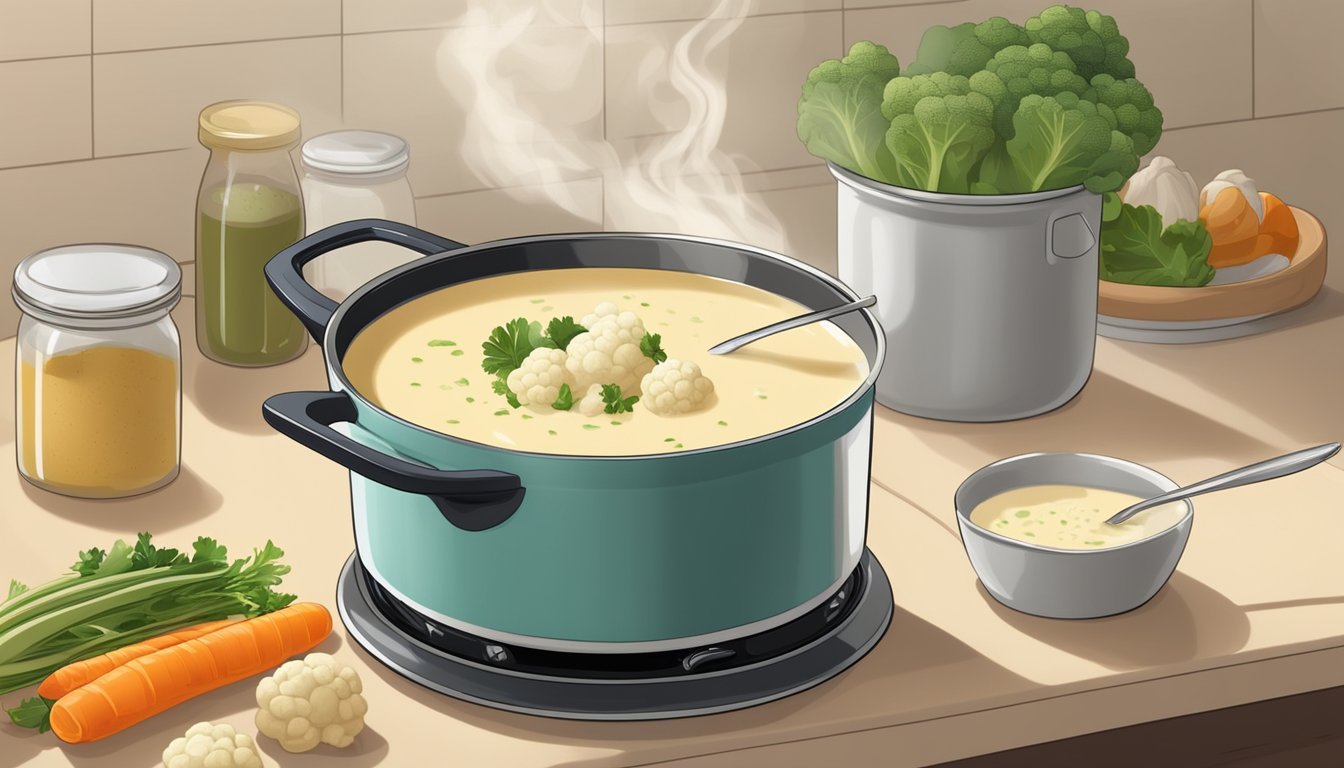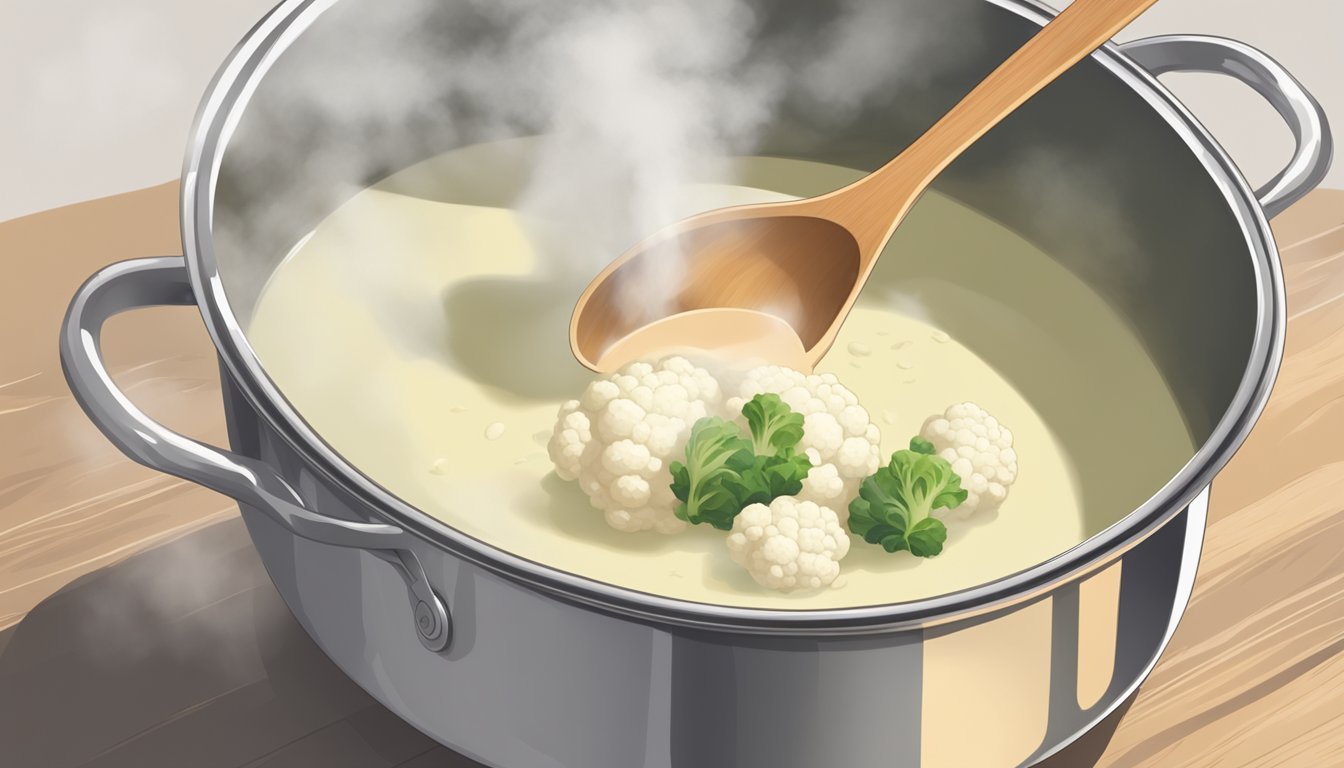Best Way to Reheat Cauliflower Soup
Tips for Preserving Its Velvety Texture
Cauliflower soup, with its comforting blend of flavors and creamy texture, has become a beloved dish for many. Reheating this soup, however, presents a small challenge: Maintaining the smoothness and creaminess that make it so appealing in the first place. It's essential to approach the reheating process carefully, as high heat can easily cause the soup to separate or become grainy.
The key to a well-reheated creamy cauliflower soup lies in the gentle application of heat. A stovetop method is often recommended as it allows for more precise temperature control. Reheating the soup over a low heat and stirring frequently can help to preserve the soup's velvety consistency and prevent it from curdling. On the other hand, if using a microwave, short intervals at a reduced power level with stirring in between can yield similarly smooth results.
While the choice between stovetop and microwave largely depends on convenience and preference, both methods require a common understanding: patience is vital. To retain the creamy nature of cauliflower soup, a slow and gradual reheat prevents the dairy elements from reacting adversely to the heat. Ensuring the soup does not reach a rapid boil is crucial, as it is this gentle treatment that keeps the soup as delightful as when it was first served.
The Science of Reheating Soups
Reheating soups (What wine goes well with soups?), particularly creamy varieties like cauliflower soup, is about preserving flavor and texture. Heat application must be controlled to avoid breaking the emulsion of creams and fats, which would otherwise lead to a grainy texture rather than a smooth one.
Microwave Reheating:
Set the power to medium.
Cover the soup to retain moisture.
Start with a two-minute interval.
Stir the soup, then continue in 30-second bursts until evenly warmed.
Stovetop Reheating:
Reheat on a low setting.
Stirring regularly promotes even heat distribution, preventing overheating.
Protects the delicate flavor and creamy texture.
During both methods, one should not bring creamy soups to a boil, as extreme heat can cause separation. One trick is to remove the soup from the heat source just before it reaches a boiling point, leveraging residual heat to bring it to a suitable serving temperature.
Regardless of the reheating method employed, one needs to understand that flavors might develop and mingle to become more pronounced with gentle reheating, which can enhance the taste of the soup. Thus, the reheater should not rush and take time for gradual heating to ensure the creamy soup retains its desired qualities.
Essential Tips for Reheating Cauliflower Soup
Properly reheating cauliflower soup is crucial to preserving its smooth texture and rich flavor. Here are pivotal steps to ensure the soup maintains its creamy consistency without compromising on taste.
Choosing the Right Reheating Method
The optimal reheating vessel for cauliflower soup is often a stove using either a saucepan or a Dutch oven. These allow for even heat distribution and prevent scorching, preserving the integrity of the soup's flavor and texture. To reheat:
Transfer the cauliflower soup into a saucepan or Dutch oven.
Place it on the stove on a low to medium heat setting.
Adjusting the Temperature Correctly
Gradual warming is key to retaining the soup's creaminess. Cauliflower soup should not be reheated quickly on high heat as it can cause the ingredients to separate or the soup to become grainy.
Begin with a low temperature, slowly increasing to medium.
Stir frequently to maintain an even temperature and prevent sticking.
Maintaining Creaminess and Flavor
Preventing the soup from overheating is essential to maintain its creaminess and avoid curdling, especially if milk or cheese is present. To protect the flavor and texture:
Avoid boiling; it should only be heated until it is just hot enough to serve.
If the soup has thickened in the fridge, a splash of milk or stock can be added to regain the desired consistency.
Ingredients Impact on Reheating
Proper reheating techniques can be greatly influenced by the specific ingredients within cauliflower soup. Understanding how these elements interact with heat is crucial to maintain the soup's desired creaminess and prevent separation or curdling.
Role of Dairy and Non-Dairy Creamers
Dairy cream, which can contribute to the rich texture of cauliflower soup, requires careful handling when reheating. To prevent the dairy cream from separating, the soup should be reheated at a lower temperature, ideally over a double boiler. This gentle approach allows the cream to warm without the proteins denaturing, which maintains smoothness.
For vegan alternatives, such as coconut or soy-based creamers, the principles are similar. Non-dairy creamers also benefit from a slower reheating process to preserve the soup’s integrity. Non-dairy creamers are less prone to curdling but can still separate if overheated.
Affect of Vegetable and Chicken Broth
Whether cauliflower soup is based on vegetable broth or chicken broth, the liquid's viscosity can be affected by the reheating method. Vegetable broth tends to be more delicate, so gentle reheating is important to retain its flavors and prevent the soup from becoming too thin. In contrast, chicken broth can generally tolerate a slightly higher heat but should still be carefully monitored to ensure that the broth does not reduce excessively, which would result in a loss of the soup’s balanced flavor profile.
Influence of Other Ingredients in Soup Retention
The retention of flavor and texture in cauliflower soup is also dictated by the presence of other ingredients. Ingredients like potatoes, which are often used as thickeners, can become gluey if overheated. It's vital to reheat the soup gradually and stir occasionally to help distribute heat evenly and prevent the thickening agents from affecting the soup's texture adversely.
Moreover, any added vegetables should be considered as they can lose their texture and vibrant color with improper reheating. Ingredients should harmonize in the reheating process, ensuring the soup remains as delightful as when it was first prepared.
Step-by-Step Guide to Reheating
Reheating cauliflower soup properly can preserve its creamy texture and prevent separation. These methods ensure the soup's smoothness and flavor are maintained throughout the reheating process.
Preparation Before Reheating
Let the soup thaw if it has been frozen, ideally in the refrigerator overnight.
Give the soup a gentle stir to recombine any ingredients that may have separated.
Stovetop Reheating Process
Pour the soup into a medium-sized pot.
Warm the soup over low to medium heat.
Stir continuously to promote even heating and prevent sticking.
Remove the pot from the heat once the soup reaches a gentle simmer and is heated through.
Microwave Reheating Process
Transfer the soup to a microwave-safe bowl.
Heat on medium power in 90-second intervals.
Stir after each interval to ensure even warming.
Continue heating until the soup is thoroughly warmed.
Oven Reheating Process
Preheat the oven to 350°F (175°C).
Pour the soup into an oven-safe dish and cover with a lid or aluminum foil.
Heat for 20-30 minutes, stirring halfway through.
Check to ensure the soup is evenly heated before serving.
Preventing and Fixing Common Issues
When reheating cauliflower soup, it’s crucial to maintain its smoothness and creaminess. This can be challenged by separation, loss of creaminess, or diminished flavor. These issues are addressable by employing careful techniques.
Dealing With Separation
If the soup separates during reheating, the emulsion has broken. They can gently reheat the soup over low heat, stirring constantly to encourage the ingredients to recombine. If the separation persists, they might consider whisking in an additional tablespoon of butter, which can help emulsify the soup and restore its uniform consistency.
Restoring Lost Creaminess
Cauliflower soup may lose its creaminess when reheated. To counter this, they can incorporate a small amount of fresh cream during the reheating process. Warming the cream separately before adding to the soup should prevent curdling. The restoration of creaminess is best achieved by maintaining a gentle heat and avoiding boiling:
Ingredients to add:
1/4 cup fresh cream (warm before adding)
1 tablespoon butter (optional for extra richness)
Enhancing Flavor Post-Reheating
The flavor of cauliflower soup can dull over time. To enhance the taste after reheating, additions such as salt and pepper should be adjusted to preference. Here's how they can intensify the flavor profile:
Sauteed onions or garlic: To deepen the soup’s flavor dimensions.
Fresh herbs: Stir in just before serving to keep the flavors vibrant.
Final Seasoning:
Salt (pinch to taste)
Pepper (ground, to taste)
None of these fixes should be overdone; balance is key in preserving the original delicacy of cauliflower soup.
Cauliflower Soup Recipes
In the quest for the ultimate comfort food, cauliflower soup stands out for its versatility and ease of preparation. The following subsections explore various recipes, including classic, vegan alternatives, and those that highlight the rich flavor of roasted cauliflower.
Classic Creamy Cauliflower Soup
The traditional creamy cauliflower soup is a staple in many kitchens due to its simple ingredients and rich taste. A basic recipe starts with sautéing onions and garlic in butter to build a flavor base. Florets of cauliflower are then added along with chicken or vegetable broth and simmered until tender. For creaminess, milk or cream is incorporated into the soup, with options to thicken it using a roux of butter and flour. The cooked ingredients are often blended to create a smooth texture.
Vegan-Friendly Variations
Vegan versions of cauliflower soup skip dairy and employ plant-based alternatives to achieve the desired creaminess. For instance, one can use olive oil instead of butter for sautéing and add coconut milk or almond milk as the creamy component. Nutritional yeast or vegan cheese can impart a cheesy flavor without the need for dairy. Additionally, vegan broths are used as a base for the soup to keep it entirely plant-based.
Roasted Cauliflower Soup Recipes
Roasted cauliflower soup recipes emphasize a deeper and more complex flavor profile. They typically involve roasting cauliflower florets with olive oil and a light seasoning of salt until brown and nutty. The roasted cauliflower is then combined with a broth as well as sautéed onions and perhaps garlic to enhance the taste. To achieve a creamy consistency, heavy cream or a vegan alternative can be blended in. Roasting not only adds a unique flavor but also creates a rich color in the soup.
Complementary Foods and Pairings
When reheating cauliflower soup, pairing it with the right foods can enhance the eating experience. The best pairings should complement the creamy texture and mild flavor of the soup without overwhelming it.
Ideal Side Dishes
Cauliflower soup pairs well with a variety of side dishes that can add both texture and flavor contrast. Here are some specific options that they can serve alongside the soup:
Roasted Vegetables: A selection like air fryer roasted chickpeas or oyster mushrooms can bring a satisfying crunch and earthiness to the meal.
Steak Bites: Cajun butter steak bites offer a rich, savory counterpoint to the soup’s smoothness.
Recommended Bread Pairings
The right bread can turn cauliflower soup into a hearty meal. The following breads are recommended for their ability to soak up the soup and add a textural component:
Garlic Bread: Provides a crispy, aromatic crunch.
Focaccia: Infused with herbs like rosemary and thyme, it complements the soup with its olive oil and herb notes.
Ciabatta: Its sturdy crust and airy interior are perfect for dipping into the creamy soup.
Salad Combinations for Balance
Salads are perfect for adding freshness and a crisp texture to the meal. Here's how one can round out the soup with a well-chosen salad:
Green Salad: A simple salad with a light vinaigrette balances out the creaminess of the soup.
Arugula Salad: Peppery arugula, tossed with a lemon dressing and shavings of Parmesan cheese, provides a bright contrast.
Preservation and Storage Techniques
Proper storage is key to maintaining the smoothness and creaminess of cauliflower soup. Whether it's leftovers or a batch made in advance, following the right techniques ensures quality and taste.
Optimal Cauliflower Soup Storage
For best results, cauliflower soup should be stored in an airtight container in the refrigerator. The ideal storage temperature is between 32°F to 35°F to prevent spoilage and maintain freshness. Soups containing dairy should be consumed within two to three days to ensure quality, while dairy-free versions can last up to four days.
Techniques for Freezing Cauliflower Soup
Freezing cauliflower soup is an effective way to extend its shelf life. One should:
Cool the soup completely before freezing to avoid bacterial growth.
Transfer to a freezer-safe container or bag, leaving an inch of space at the top as soup expands when frozen.
Whether the soup is dairy-free or gluten-free, these steps help maintain its integrity. Label the container with the date. Freezing can keep the soup good for up to three months.
Thawing and Reheating Frozen Soup
To thaw frozen cauliflower soup:
Transfer it from the freezer to the refrigerator and let it slowly defrost overnight.
If in a rush, one can also thaw the soup in a microwave using the defrost setting.
To reheat, avoid boiling to maintain the cauliflower soup's creamy texture. Warm the soup over low to medium heat, stirring occasionally to ensure even heating. For dairy-free soups, gentle reheating is crucial to avoid separation.
Health Benefits and Nutritional Considerations
Cauliflower soup can provide a hearty, nutritious meal with fewer calories compared to other cream-based soups. This section outlines the nutritional advantages and how cauliflower contributes beneficially to one's diet.
Caloric and Macronutrient Profile
One cup of raw cauliflower boasts a mere 27 calories and contains a balance of macronutrients essential for energy production and overall health. It consists of:
Calories: 27
Carbohydrates: 5 grams
Protein: 2 grams
Fat: Minimal
These figures indicate cauliflower's low-calorie density while providing a moderate amount of protein and carbohydrates.
Fiber and Protein Content
Cauliflower is a source of both dietary fiber and protein, which are vital for digestive health and muscle maintenance, respectively. In one cup:
Fiber: 2 grams
Protein: 2 grams
Fiber aids in digestion and prolongs satiety, while protein is crucial for tissue repair and growth.
Cauliflower's Role in a Balanced Diet
Incorporating cauliflower in a vegetarian or health-conscious diet can enhance nutritional intake without adding excessive calories. Cauliflower is rich in essential vitamins and minerals, like:
Vitamin C
Vitamin K
Folate
These nutrients support various body functions, including the immune response and blood clotting processes. Moreover, cauliflower's versatility makes it a valuable component of a balanced diet.
Enhancing Your Soup with Garnishes and Toppings
A bowl of creamy cauliflower soup becomes even more delightful when finished with the perfect garnish or topping. This section explores traditional and novel additions that can transform your soup into a culinary delight.
Classic Garnishes for Creamy Soups
For those who appreciate time-honored traditions, classic garnishes can significantly elevate the taste and presentation of creamy soups.
Parsley: A sprinkle of fresh chopped parsley adds both color and a mild, herby freshness to the dish.
Cheese: Incorporating shredded cheese such as cheddar provides a depth of flavor and a delightful meltiness.
Bacon: Crispy, crumbled bacon offers a savory crunch and a hint of smokiness to complement the smooth soup.
Innovative Toppings for an Exquisite Taste
Those seeking more adventurous enhancements can opt for innovative toppings to impress the palate and the eyes.
Seeds: Toasted pumpkin or sunflower seeds contribute a nutritious crunch and an extra layer of texture.
Nuts: For a heartier finish, a scattering of chopped nuts — almonds or cashews — can add both protein and satisfying richness.
Cream Cheese: A dollop of cream cheese, blended into the soup, introduces a tangy creaminess, elevating it to a gourmet level.
Troubleshooting Frequently Asked Questions
Q: How can one reheat cauliflower soup without it becoming grainy?
A: Reheating should be done gently over low heat. If using a microwave, heat the soup in medium power for 2-minute intervals, stirring in between to ensure even heating.
Q: What's the best way to maintain the smoothness of cauliflower soup when reheating?
A: For stovetop reheating, one should stir the soup continuously and maintain a low heat to prevent it from sticking to the pot. In a microwave, covering the soup with a lid can help retain moisture and promote a smooth texture.
Q: Can any vegetables be added to the soup while reheating, and if so, which ones?
A: One may add vegetables such as onions or garlic for flavor during reheating. However, it's important to ensure these veggies are finely chopped or pre-cooked to prevent altering the soup's texture.
Q: Are there any tips for an easy cauliflower soup recipe reheating process?
A: The key is simplicity and low heat. For those new to making cauliflower soup, sticking to basic reheating methods, like the stovetop or microwave, is recommended to control the temperature and achieve a creamy result.
Q: Is it possible to make substitutions in the soup recipe when reheating?
A: Substitutions should be done cautiously. Ingredients with similar textures to cauliflower, like root vegetables, can be incorporated but may change the final flavor profile. For seasoning adjustments, one should taste the soup before adding any additional spices.
Remember, the smoothness and creaminess of cauliflower soup are best preserved by low and slow reheating methods, stirring frequently, and avoiding high heat to safeguard the delicate texture of the soup.



